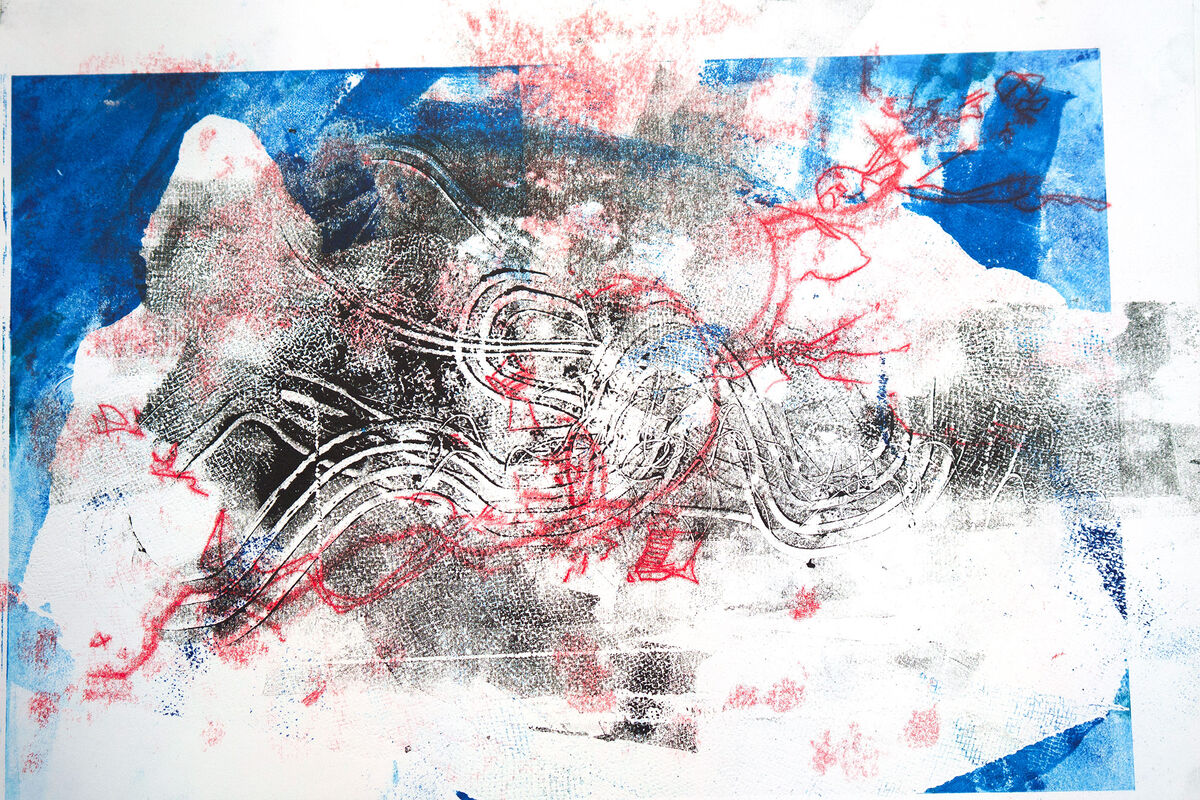Jetsam
Ocean currents and tides carry materials over long distances; shuffling, spreading, and concentrating them. While some of the materials might be of natural origin, in recent years there have been increasing amounts of man-made marine debris, traveling along with the ocean currents. Stowaways can sometimes be found among them: rafting organisms, plants, and animals attached to floating debris can travel vast distances, much further than they can on natural floating objects. Thus they can enter new habitats and, if the conditions are favourable, colonize them, becoming an invasive species. Scientists have coined the term plastisphere for these floating environments. This series of prints was inspired by the tidal movements of the oceans and the items they wash ashore. Due to the superimposed layers of monotypes and frottage, the boundaries between natural material and man-made pollution have been blurred.
Sources: Barnes, David K. A. and Keiron P. P. Fraser, “Rafting by five phyla on man-made flotsam in the Southern Ocean”, Marine Ecology Progress Series, vol. 262, (2003): 289-291.
Mantelatto, Marcelo Checoli et al., “Marine litter and wood debris as habitat and vector for the range expansion of invasive corals (Tubastraea spp.)”, Marine Pollution Bulletin, vol. 160, (2020).
Zettler, Erik R.; Tracy J. Mincer and Linda A. Amaral-Zettler, “Life in the “Plastisphere”: Microbial Communities on Plastic Marine Debris”, Environmental Science & Technology, vol. 47, (2013): 7137-7146.
